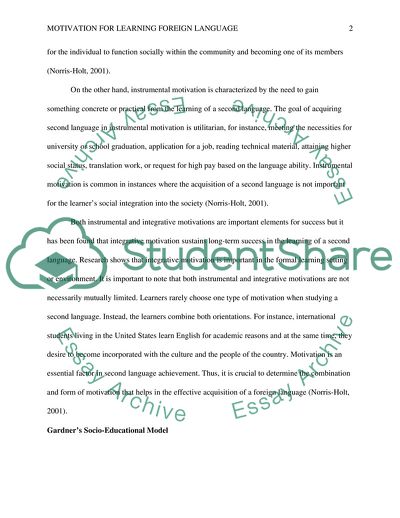Cite this document
(Motivation for Learning Foreign Language Literature review Example | Topics and Well Written Essays - 2000 words, n.d.)
Motivation for Learning Foreign Language Literature review Example | Topics and Well Written Essays - 2000 words. https://studentshare.org/education/1763889-motivation-for-learning-foreign-language-and-how-to-keep-students-motivated
Motivation for Learning Foreign Language Literature review Example | Topics and Well Written Essays - 2000 words. https://studentshare.org/education/1763889-motivation-for-learning-foreign-language-and-how-to-keep-students-motivated
(Motivation for Learning Foreign Language Literature Review Example | Topics and Well Written Essays - 2000 Words)
Motivation for Learning Foreign Language Literature Review Example | Topics and Well Written Essays - 2000 Words. https://studentshare.org/education/1763889-motivation-for-learning-foreign-language-and-how-to-keep-students-motivated.
Motivation for Learning Foreign Language Literature Review Example | Topics and Well Written Essays - 2000 Words. https://studentshare.org/education/1763889-motivation-for-learning-foreign-language-and-how-to-keep-students-motivated.
“Motivation for Learning Foreign Language Literature Review Example | Topics and Well Written Essays - 2000 Words”. https://studentshare.org/education/1763889-motivation-for-learning-foreign-language-and-how-to-keep-students-motivated.


